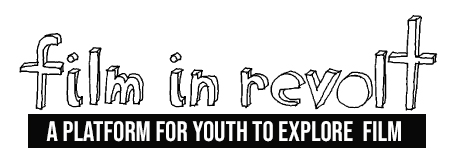When it comes to film, the stronger the story, the stronger the film. In Bruges nails this to an extent that is rarely encountered in film as writer and director; Martin McDonagh nails every line with a mixture of sardonic humour and enthusiasm.
This dichotomy arises from the two protagonists, Ray and Ken. The dialogue is emulated by this difference in the opinions both characters have of Bruges. While one loves it the other is opposed to the city –the old compared to the new; the wise compared to the naïve. To this effect, McDonagh reflects on the inhibitions of either character to fully absorb their environment. Through both Ray’s and Ken’s isolation from their homes following their ill-fated actions, McDonagh creates an atmosphere unique in contemporary film.
From the opening, we are introduced to the dialogue of the film with the phrases ”Bruges is a shithole” contradicted by ”Bruges is not a shithole.” The interwoven discussion always takes place throughout the film, and really it’s the strongest feature. Such chemistry is characteristic of the theatrical mixture of McDonagh’s script and Brendan Gleeson and Colin Farrell’s interactions. Coming from theatre to cinema his reliance on language is integral to his performances, and this is exemplary with In Bruges.
The contrast between the conservative Glenn, whose language is limited and reserved only for the praise of the medieval town, and Ray’s profanity-rich dialogue, exhibits the two reactions that occur from a tourist: one, enthusiastic, and the other, reluctant. Indeed, these oppose the dark undertones that permeate the movie and is cemented by Ralph Fiennes’ depiction of Harry Waters. His introduction, like the establishment of all the characters, solidifies an individuality: one of rage and anger completely separate from the duo. It is his following interactions with Glenn and Ray that create the film, as the two men wavering in the discipline are confronted by a man so absorbed by what he is it leads to his demise.
Displaying these personalities creates an atmosphere similar to his future films – a dark, cynical and humorous approach to conventional issues. If this were applied to his most recent film, the critically acclaimed Three Billboards Outside Ebbing, Missouri, the audience could view a similar take on the sinister themes. He tackles the violent and largely horrific subject matter of his plot to underline the humanity of what seem to be largely inhuman people.
The dialogue alone doesn’t create the film; the setting is also important. Bruges, the Belgian city most notable for its Gothic architecture and baroque styling, menaces over the characters, creating darker lighting and a continuously brooding overcast. The greatest separation from this environment is the children’s playground filled with colour and warmth which appears ironic given the mimesis that occurs within it. The environment replicates the plot and harkens back to the conventions of traditional plays, especially those of Shakespeare, which McDonagh is heavily inspired by. It is this environment that necessitates the overall absurdity that creates the film. McDonagh exploits the camera to its fullest extent in these depictions by often looking up or down to the protagonists as they walk around the town. The differing angles creating a binary between what seems to be a good and evil that in numerous occasions seem to be lacking, as is observed by close-ups during confrontation to emulate the severity of the scenes. Such a difference is pronounced throughout the film, yet the definition seems to be clouded as the plot advances.
The buildings allow the absurdism to roam the film’s setting fairly easily. The dwarf, the Baroque paintings and the conventions of purgatory all seem at home in a film largely concerned with murder. The homage that draws Ray away from Ken seems reasonable, and it only goes to serve as the final act of the film; without seeming overly extravagant, it just seems wanted. Similar to Donald Glover’s groundbreaking series Atlanta, the sense of the absurd doesn’t seem out of the blue, it seems to be where it should be. The paintings shown in the gallery depict what the audience expects to see on the streets; the themes of Heaven, Hell and Purgatory seem largely warranted within the city. This concept of purgatory is delivered in such a way that the people that appear in the film adopt the roles of the angel, the demon and the man stuck in between the two, being torn apart. Ray is left reminiscing about his time in Bruges, thinking maybe “Bruges is hell,” while being carried through a troupe of characters dressed in medieval outfits of demons and horses. He is unable to leave Bruges and metaphorically unable to leave the actions that shunned him from the career he assigned to himself.
Martin McDonogh punctuates violence with peace and beauty, the heaven and hell with purgatory and the dichotomy of good and evil with ambivalence. The absurdity allows moral ambiguity to flourish and creates a niche for the audience to reflect on the actions of a murderer and humanises the fallacies through humour. By creating such a film, he challenges the conventions and crushes the ideas of unnecessary violence in the face of brief but necessary confrontation to underline humanity’s inherent need not only to forgive but recognise the failures everyone inevitably makes.
Written by David “Gilbert” Paicu (18) edited by Jim Poe (as part of the Film in Revolt writing mentorship program).
